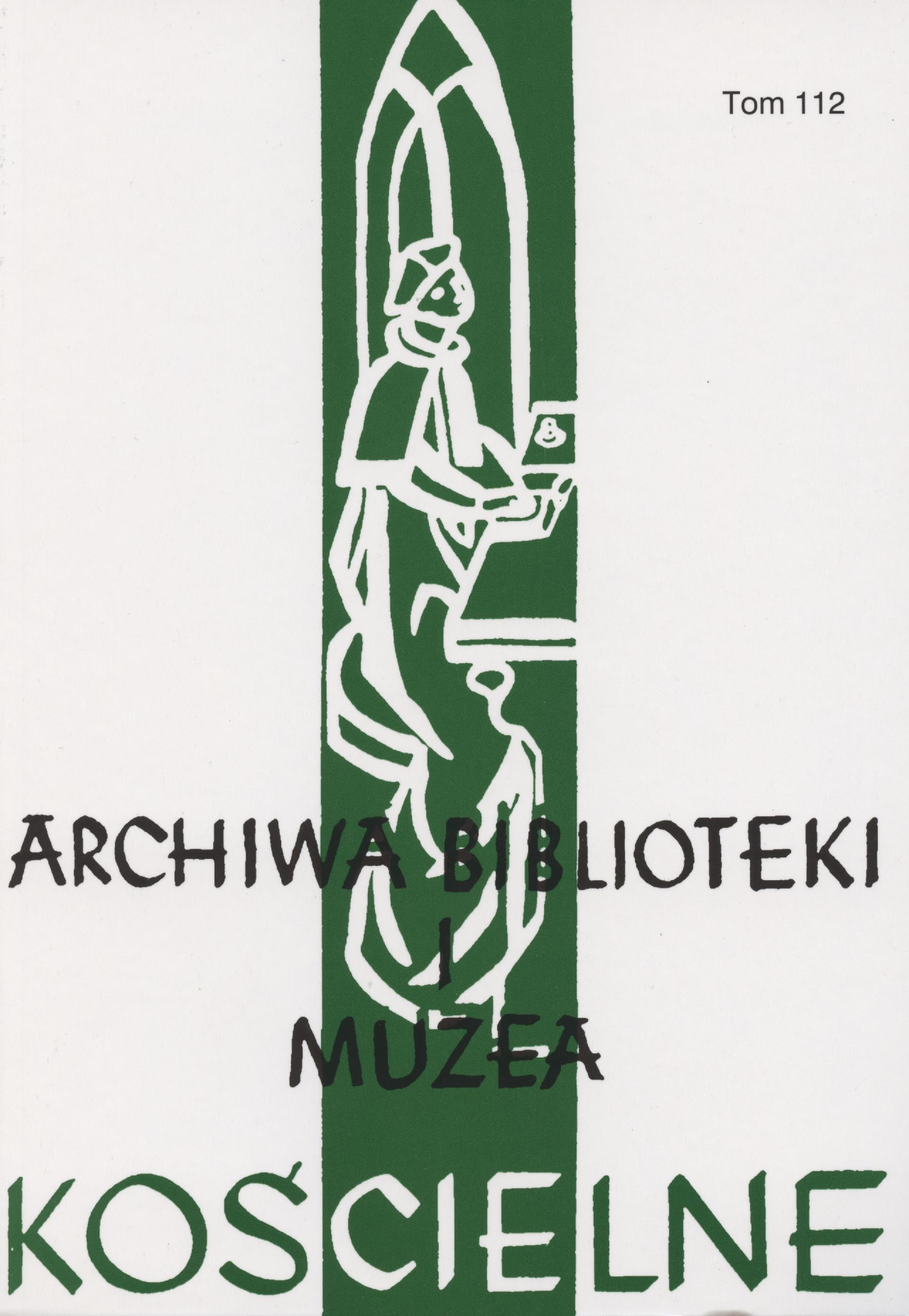Źródła rękopiśmienne klasztoru klarysek gnieźnieńskich w Archiwum Archidiecezjalnym w Gnieźnie. Stan wiedzy, prezentacja spuścizny i możliwości badawcze
Manuscript sources from the Poor Clares Convent in Gniezno held in the Archdiocesan Archive in Gniezno: Our knowledge, legacy and research opportunities
Author(s): Olga Miriam PrzybyłowiczSubject(s): Language and Literature Studies, Geography, Regional studies, Library and Information Science, Theology and Religion
Published by: Katolicki Uniwersytet Lubelski Jana Pawła II - Wydział Teologii
Keywords: monasticism; the Poor Clares; Gniezno; archival material; manuscripts
Summary/Abstract: The aim of the article is to present and analyse the manuscript legacy of the Poor Clares Convent in Gniezno. After the dissolution of the convent in the nineteenth century (likely the second half), this legacy was transferred to the Archive of the Metropolitan Chapter, and is currently held in the Archdiocesan Archive in Gniezno. So far, researchers have not been particularly interested in studying this material. This collection consists of manuscripts, documents and parchment diplomas, most of which are in the form of loose records (AKM – A Cap) – over 2,500 items and over 4,000 cards. 27 manuscripts are held in a few collections: six items in the fonds of the Poor Clares Convent (ZKG) and 21 in the division of the Archive of the Metropolitan Chapter (A. Cap. B). The latter relate to economic and accounting matters.The manuscripts fall into three categories: a legal and normative category which comprises monastic rules and constitutions (two documents), a category which includes liturgical books (five) and the records on the ceremony of taking the veil, and the most numerous group – material relating to economic and accounting matters. The third category contains 10 manuscripts of expenses and/or income of the convent (even the oldest one from 1613), the inventory of the Poor Clares’ rural property of 1593, and 10 items dating back to the second half of the eighteenth century containing settlements with the convent’s serfs in the town of Kostrzyn and villages which belonged to this monastic congregation. A precious document that fits into the monastic literary output of the early modern period is the code entitled “The books of all matters of the Gniezno Convent of the Poor Clares. This is a catalogue of all the nuns who ever took monastic vows in this convent, both dead and alive. This is also the inventory of the whole property of the convent, its farm income and privileges […] diligently written in 1609 AD”. The code consists of 802 paper pages with several dozen types of handwriting. The data it contains are prosopographic and economic (over half of them) details, information about the realities of life and the functioning of this enclosed community.Despite being a small collection, the manuscripts are an extremely valuable legacy due to the wide range of information they contain. Loose records have an even greater amount of information. A comprehensive and detailed study of the material mentioned above, particularly the economic and accounting manuscripts, will shed light on the methods of managing the convent estate, the finances of the congregation in the sixteenth-eighteenth centuries, and the functioning of the convent in the urban economy and society of Gniezno in the early modern period. Only a detailed analysis will make it possible to answer a number of questions about the internal affairs of the convent, its material culture, the everyday life of the nuns, and above all the convent estate: the profitability of the property, a budget, the structure of income statement accounts and the standard of living of the nuns.
Journal: Archiwa, Biblioteki i Muzea Kościelne
- Issue Year: 2019
- Issue No: 112
- Page Range: 317-336
- Page Count: 20
- Language: Polish

